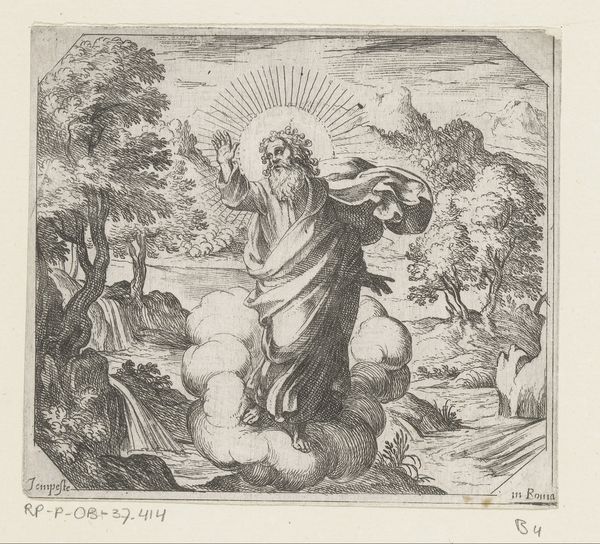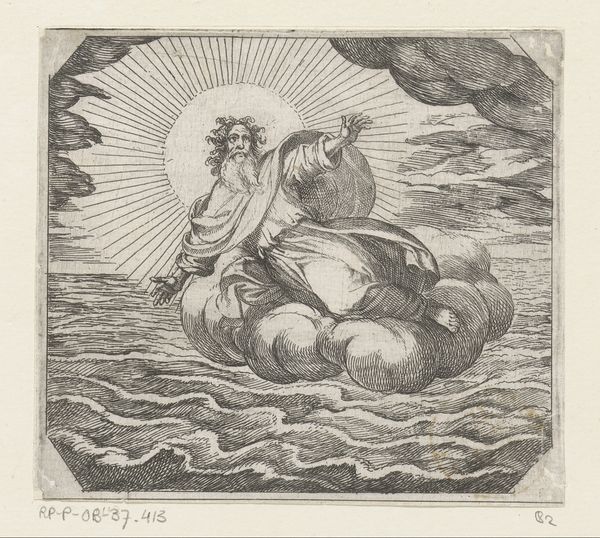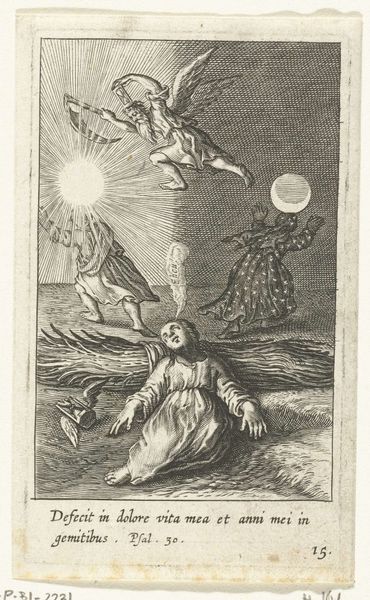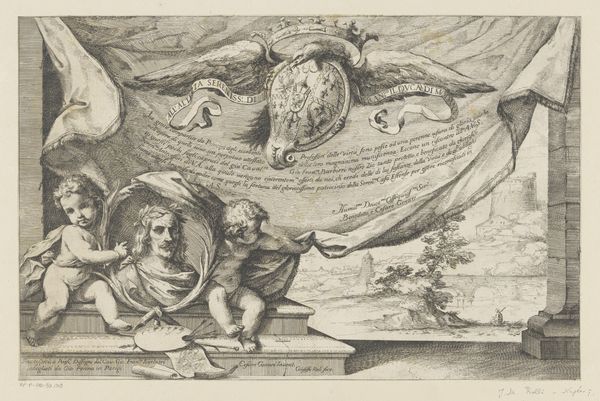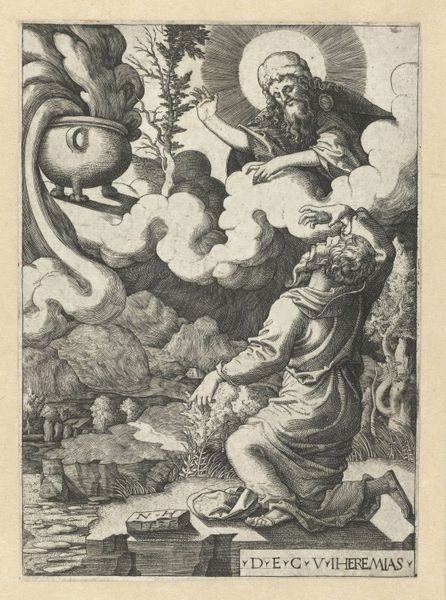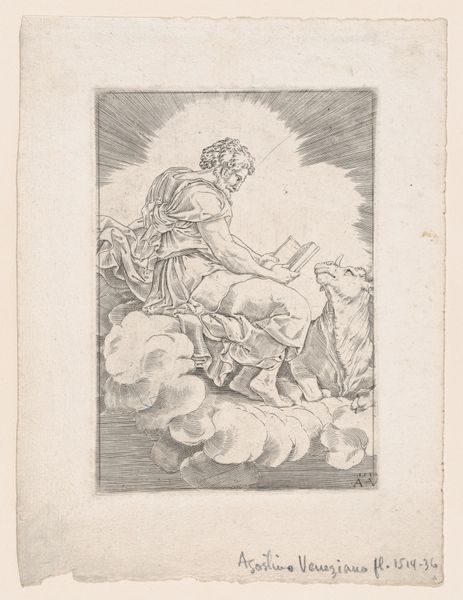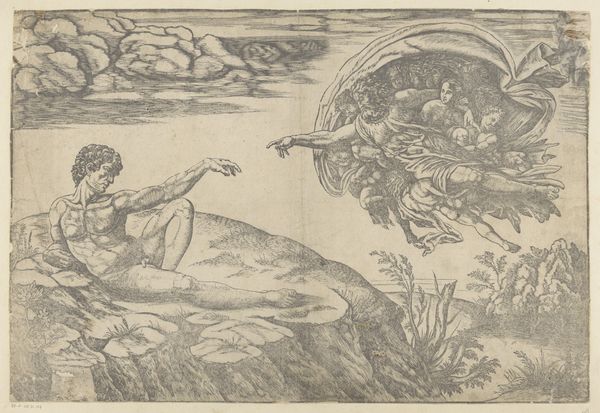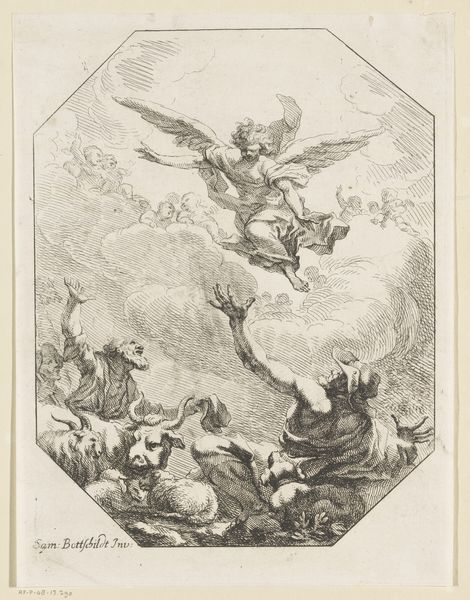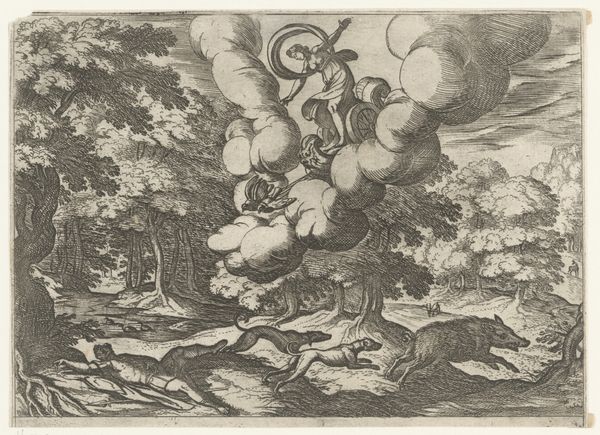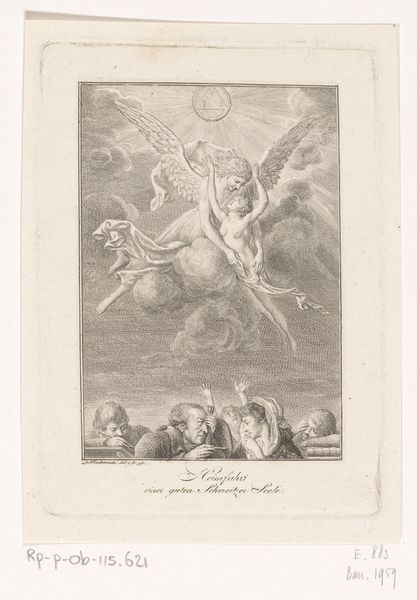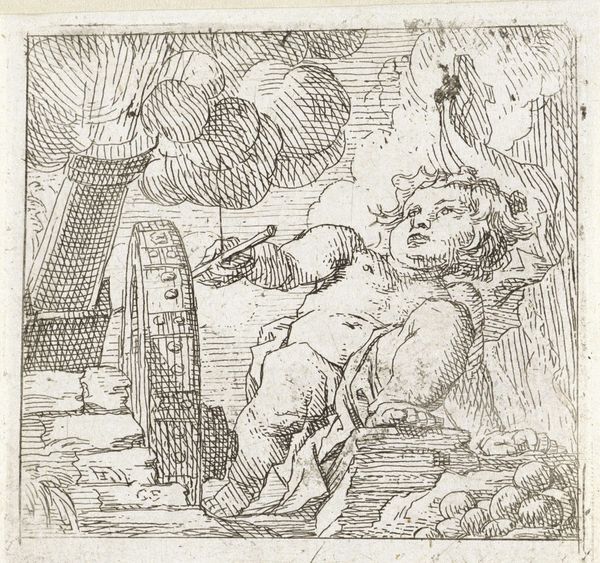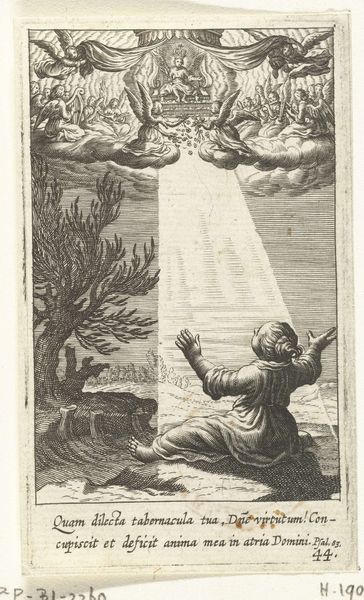
print, engraving
#
baroque
# print
#
old engraving style
#
landscape
#
figuration
#
line
#
history-painting
#
engraving
Dimensions: height 110 mm, width 126 mm
Copyright: Rijks Museum: Open Domain
Curator: Here we have a 17th-century engraving, likely dating from between 1565 and 1630, titled "God Creates the Sun, Moon, and Stars," attributed to Antonio Tempesta. It's currently held here at the Rijksmuseum. Editor: The detail is astonishing for something so small and produced using older technologies. I'm immediately drawn to the rendering of the clouds – they look like sculpted heaps of whipped cream! The landscape seems almost to mimic the clouds' form as if mirroring divinity. Curator: Exactly! The linear quality, of course, is a direct consequence of the engraving process itself, where the artist etches lines into a metal plate that will hold ink, and creates the final image as a print. Consider the economic implications of such printing. The possibility for relatively mass-produced artwork—what changes that facilitates across the landscape of cultural production? Editor: Makes you wonder about Tempesta’s studio practices, doesn’t it? All those hands involved in the labor of producing and distributing such images…It also raises questions for me around authenticity. What is lost of the artist's hand here, or perhaps reconfigured across several laborers and consumers of images? Curator: Precisely. It is work in series to transmit values to different locations and to various layers of consumers. The theme obviously connects to religious beliefs and stories, a history painting for the masses… Editor: There is an interesting tension. Here, we have this divine scene – this rather imposing figure perched above the world—executed through painstaking manual processes that, ultimately, can lead to its dissemination via mass media. That shifts what "divine" labor really means! It sort of collapses this idealized role of god the artist. Curator: In our own context today, we expect our artwork to be novel, uniquely conceived; however, we need to also examine how images from the 16th and 17th centuries become a popular mechanism of cultural dissemination via printed image. Editor: Well, now, after considering how labor informs this printed, historical context... It prompts a kind of meditation for me about time, and about what "creation" really means! Curator: And I am now wondering what will be the "printed" image that lasts throughout centuries of artistic work that transmits meaning in a form reproducible for years.
Comments
No comments
Be the first to comment and join the conversation on the ultimate creative platform.
